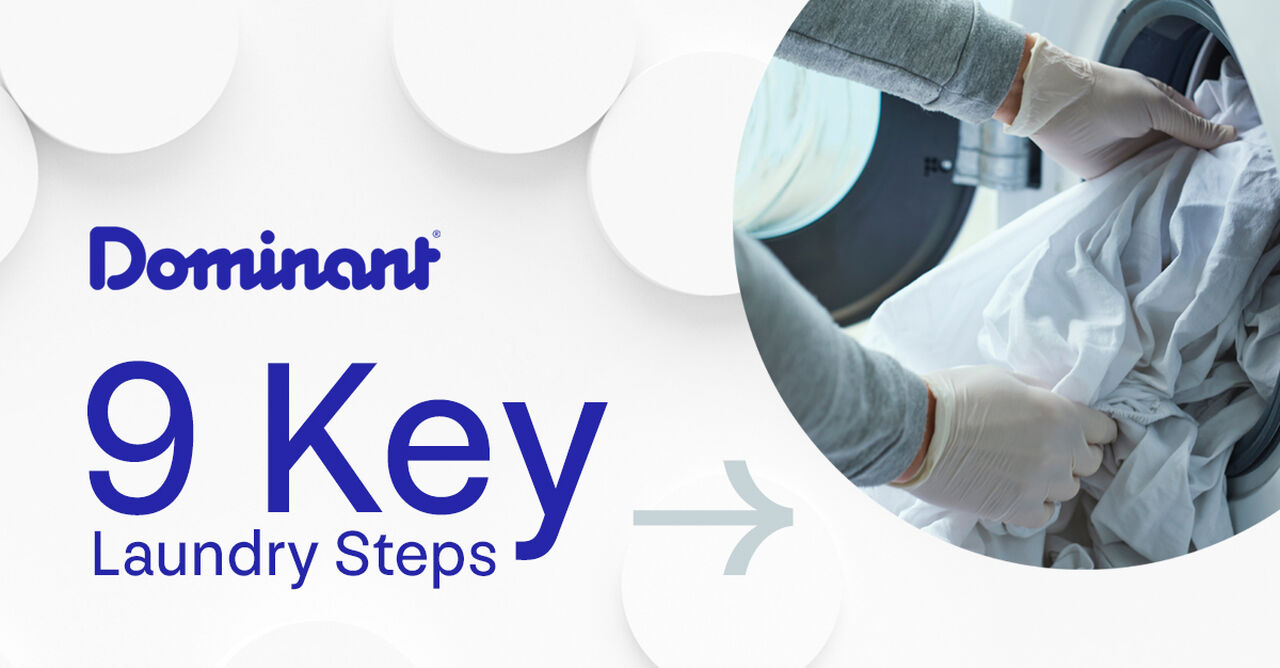
9 Key Laundry Steps
9 Key Laundry Steps
Learn more about the 9 key steps to improve your commercial laundry.
1. Linen Collection
When handling soiled linen always wear the appropriate PPE (gloves, mask and an apron). Colour coded linen bags assist with easy identification of the linen and soil types. These colours should conform to your organisations infection control policy, and the Australian Laundry Standard 4146:2000 (if compliance is required ). Linen should be sorted with an emphasis on infection control with lightly soiled linen and foul or infectious lined sorted separately. They should also be sorted into groups of whites, colours, and personal/delicates.
2. Sorting
Sorting of linen is very important for determining which process is applied to the linen when it reaches the laundry. Stained or soiled fabric should be treated and washed as soon as is possible as stains may become harder to remove. Woollens and Delicates should be washed separately as they need more gentle wash cycles so as to not damage fabrics. White linen should be separated from coloured linen to prevent the colour from bleeding into the whites.
3. Pre-Treatment
Certain types of stains require pre-treatment before washing. Soaking, or a spot treatment can be quickly attended to with Pre-Wash Spray that will assist with focused stains.
4. Loading the Machine
Loading the machine correctly allows for good mechanical action, (agitation) and allows cleaning products to be embedded into the linen and assist in the release of soiling. Incorrect loading can lead to poor laundry results. Underloading can contribute to premature linen degradation over time, and overloading can contribute to reduced mechanical agitation where soiling is not removed. Good mechanical action allows the laundry to move around the washing machine, if the machine is overloaded, mechanical action will be significantly reduced. On the contrary underloading the machine will waste water, cleaning products, energy, and labour.
Tip: Always remove PPE clothing and gloves and wash your hands after loading the machine and before handling clean linen. The potential for cross-infection in the laundry is very serious.
5. Washing
Ensure that you are using the correct wash program for the linen you are washing. This will ensure the correct temperature for disinfection of soiled linen is reached. When unloading the washing machine you should also check the linen to see if any stains remain and have not washed out. These will be easier to re-treat if they have not been set by the drying process.
6. Drying
Wet linen should be transferred in clean trolleys to the dryer for loading. Ensure you are using the correct drying setting for the type of linen as incorrect drying can cause wrinkling, shrinkage, or damage of linen.
7. Finishing
After drying linen should then be pressed or ironed, and then carefully folded.
8. Storage
Cleaned linen should be stored in a clean dry place, in a manner that is:
- Distinctly separate form soiled linen
- Prevents contamination ( eg – dust, vermin etc )
- Allows stock rotation
Laundered linen should be stored on clean shelves and, if necessary, wrapped in a protective covering.
9. Daily Maintenance
For daily maintenance of your laundry it is recommended to complete the below daily checklist.
- Have you checked the chemical levels today?
- Are all 5 litre bottles/drums attached to dispensers dated when last replaced?
- Are the coloured caps on correctly?
- Is there chemical in the tubing from the 5 litre bottle to the dispenser?
- Are there any visible leaks?
- Are the dispenser screens on?
- Are the 5 litre wall brackets secure? (if used)
